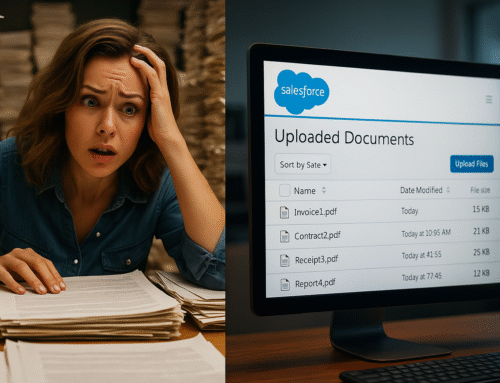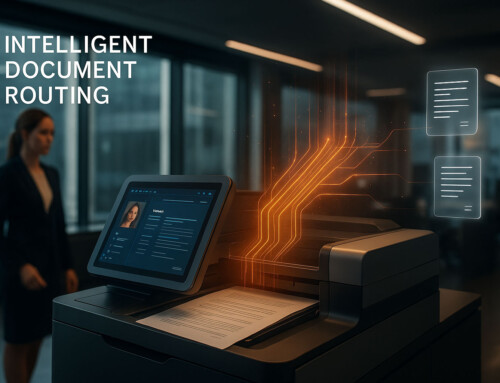
It’s no secret organizations are ditching paper at dizzying speeds. According to an estimate, around 22% of businesses considered themselves paperless in 2019, the latest year for which the data is available. This number might seem underwhelming, until you consider that it stood at a meager 1% only two decades earlier.
Saying goodbye to paper is almost always accompanied by the adoption of digital documents. As a result, document management systems, once on the fringes of business operations and viewed as a luxury by a large number of organizations, have begun taking center stage over the past few years.
In this article, we’ll discuss the 11 major trends that are revolutionizing document management practices in 2022. Some of these trends have been years in the making. Others have rather recent origins. Yet both have the potential to shake up how businesses manage documents.
Here are the eleven major document management trends in 2022:
1. Cloud is here to stay
According to a report from Statista, more than $170 billion went to the cloud services market in 2021. The migration of capital towards cloud computing is only going to increase this year, mainly because cloud computing has had an indelible impact on document management systems.
It is because of the cloud that organizations can access their documents anytime, anywhere. With the cloud, you do not need to be in the office or on any specific computer to securely access your files. All you need is a device that can connect to the internet and a reliable internet connection.
Cloud-based document management not only lets you safely access your documents. It also backs scalability, attracting businesses of all sizes. Aside from that, cloud services provide a platform on which you can categorize each of your files according to its contents.
Due to these and many other benefits, cloud computing will continue to be the driving force behind the best document management systems in 2022.
2. Social integration will increase
Only a few decades ago, nobody in their right mind could have predicted that you would be able to sort through files shared by colleagues online, share your work for feedback before submitting it for final approval and organize documents on the go. Yet Slack and similar tools have made it all possible.
However, anyone who thinks that the integration of social technology into document management has already reached its zenith is in for a surprise. We’re only looking at the tip of what is possible with intranet file sharing systems. The horizons of what we can do with content will only expand.
Why are we so sure about this? Because we’re aware of the benefits that come from liking, commenting, tagging, and searching for files online. There is no way that, having seen and experienced the benefits of social technology, document management systems will let them be.
3. Mobile-friendly development is critical
According to a survey conducted in February 2021, nearly 50% of the respondents claimed that they spent five to six hours a day on their smartphone. This shouldn’t come as a surprise – chances are that you’re reading this article on a small screen too!
In such a scenario, any document management system that intends to stay relevant must be accessible from mobile devices, usually in the form of a mobile app. But accessibility alone isn’t enough. The experience of using the app must also be user-friendly.
This means that any software platform that wants to attract a large user base must have a mobile intranet app offering a user-friendly experience. As people have become aware of the importance of accessing their files whenever they need it, wherever the need arises.
4. Customer portals are more important than ever
Every organization is aware that customers are its lifeblood. Without a healthy percentage of satisfied customers, your company’s bottom line will take a massive hit. And it is impossible to keep your clients happy unless you’re in constant touch with them.
That is where customer portals come to your rescue. In the world of document management software, customer portals allow clients to log in, access/edit documents, and give feedback. The clients can also ask questions or give answers on documents related to them.
The good news is that setting up customer portals isn’t difficult. You can easily get them up and running through your organization’s intranet, which contains its document management system. Provided you do that, your business’s bottom line and customer satisfaction will improve.
5. Collaboration will grow in importance
Unless you’re the next William Shakespeare who needs absolute silence to complete their upcoming novel, or you’re working on a super-secret mission upon which the future of humanity hinges, working together will most definitely increase the quality of the project you’re working on.
Sure, you can use email to get in touch with your colleagues. But anyone who has ever sent an email will tell you how difficult and confusing it is to collaborate over one. That is especially true when you’re making changes in a document or tracking changes in one sent over by a colleague.
Fortunately, developers of the best document management systems are aware of this. Which is why almost every DMS worth its salt comes with a built-in collaboration tool. One which you can join with your organization’s intranet and other document management products.
6. Scalability is non-negotiable
As your business’s fortunes improve, can you make do with a document management system that stands still? Scalability is a non-negotiable requirement for any document scanning system that wants to cater to businesses large and small. Without the ability to adapt, any DMS will one day be user-less.
Luckily, most document management systems on the market these days are designed with scalability in mind. These software have one eye on your organization’s current requirements and another on where your business could go in the coming years and decades.
For this reason, as your business’s bottom line grows and its organizational size increases, these systems will help business owners’ transition smoothly.
7. Costs are going down
Like in any other field, you usually get what you pay for in software. Many systems that advertise as “one size fits all” aren’t even worth the low prices they charge their subscribers, let alone effectively doing the work their counterparts perform at exorbitant prices.
That said, many reputable software companies have woken up to the demands of organizations that they need more products and services at more affordable prices than what they’re currently paying. Today’s vendors know that only affordable software can achieve universal adoption.
This realization, together with the advancements in cloud-based software and technology, has allowed businesses to purchase document management systems without seriously hurting their bottom lines, convincing their competitors to follow suit.
8. Cyber security concerns will take center stage
According to a report by Hiscox, cyber-attacks cost businesses of all sizes about $200,000 on average. For big organizations, this number might feel like pocket-change. For small organizations, it might be the difference between staying afloat and going bankrupt.
Consequently, data security will be one of the top concerns of organizations thinking of going paperless in 2022. The goal won’t just be to get safe, controlled remote access. Businesses will also want DMS features like encryption, secure sharing, and permission-based access controls.
That calls for cloud-based solutions to erect barriers that could keep miscreants at bay while allowing hassle-free access to authorized personnel. Indeed, this will be a difficult balance to strike. But for any DMS which aims to attract universal adoption, there is no other way.
9. Integration will go through the roof
In the bad old days, project management software worked as a stand-alone system. As a result, any project manager overseeing a team of multiple people had to log into several software platforms to complete a single project with multiple pieces, leading to delays.
Luckily, with social intranet software, project management software and DMS can finally co-exist in the same space. This has made the lives of project managers easy by allowing them to integrate workflow, communication, scheduling, and document management in the same space.
As a result, any DMS that doesn’t allow for integration with project management solutions will be left behind in the pecking order in the coming years.
10.Businesses will become more productive and sustainable
According to an estimate, the average US worker uses 10,000 sheets of paper per year. This translates to about 1 kilogram worth of paper and paperboard products. The bad news is that all this paper doesn’t evaporate into thin air afterward – it requires spaces where it can be stored.
Fortunately, as the adoption of document management systems grow, the need for offices to build massive silos where they can store physical documents new and old will decrease. With an online repository of information, organizations can finally bid farewell to ‘file’ rooms.
The demise of paper will have a positive impact on workers’ productivity, too, given that an average office worker spends up to 30% of their time searching for files. The reduction in paper use will also benefit the environment, as fewer trees will need to be cut to be used as raw materials for paper-making.
11.Popularity of AI-enabled DMS will increase
AI-enabled DMS software solutions are helping businesses in more ways than one, including:
Document Clustering
Document clustering is an AI-enabled feature that groups a large collection of documents into small clusters relevant to each other.
Thanks to document clustering, you can quickly tell how different documents with no apparent similarity are related to each other. This information can be helpful in certain scenarios, including when you intend to segment your user database based on their buying patterns.
Document Classification
Document classification and processing is another area where AI can improve DMS.
For instance, AI has acquired the ability to identify documents by keywords, invoice numbers and dates. An AI-enabled DMS can thus automatically file documents to their respective folders, saving time and effort of the worker that previously had to manually file all documents.
Data Extraction
When infused into extraction, AI has massive business potential. Not only can it extract vital pieces of data, but it can use techniques like data visualization and predictive analysis to derive meaningful insights from the data on the business’s servers.
Furthermore, as Google’s Document AI has shown, AI-enabled DMS can improve organizational efficiency by deriving information from structured and unstructured data, before validating both to ensure that your documents are compliant and accurate.
Conclusion
These trends give us an idea of what the future has in store for document management systems. Outdated, inflexible, and stand-alone applications are being rejected like never before by organizations, their places filled with user-friendly, integrated AI-backed solutions.
Cloud computing, social technology, and mobile devices have made a permanent impression on document management, throwing the gauntlet to DMS developers to come up with solutions that professionals in virtually every industry can adapt.





